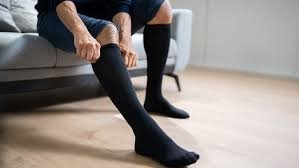Selecting Appropriate Compression Stockings for Venous Treatment
Initiating vein treatment often necessitates the use of compression stockings, requiring a careful balance between therapeutic efficacy and patient comfort. The selection process involves several key considerations, primarily focused on compression level (mmHg), length, toe design, and proper sizing.
Compression Level:
Medical-grade compression typically begins at 20-30 mmHg. This designation refers to a graduated pressure gradient, with 30 mmHg exerted at the ankle and a progressive reduction to 20 mmHg at the thigh. This differential pressure facilitates the compression of superficial veins while maintaining patency in deeper vasculature, including arteries and deep veins.
Patients presenting with venous ulcers, moderate to severe leg/foot edema, or hyperpigmentation may require higher compression levels, specifically 30-40 mmHg.
However, a gradual approach is often recommended, initiating treatment with lower compression for several months to establish patient tolerance before escalating pressure.
Stocking Length:
Available lengths include knee-high, thigh-high, and pantyhose/leggings. Pantyhose designs are indicated for patients with varicose veins extending to the groin region. Knee-high stockings are suitable for individuals with symptoms primarily localized to the lower leg, particularly those engaged in active lifestyles. Thigh-high stockings are recommended for patients with varicose veins located behind the knee or in the knee cap region, as knee-high length may constrict middle of varicose veins venous clusters, causing discomfort.
Toe Design:
Options include open-toe and closed-toe designs. Open-toe stockings, often accompanied by a toe cover in higher-end models, facilitate easier donning and doffing. However, caution is advised to prevent bunching below the toes, which can induce numbness. This design accommodates open footwear, such as sandals.
Closed-toe stockings are compatible with sneakers and boots, although they may not be suitable for individuals with elongated toes.
Sizing:
Accurate sizing is paramount. Each manufacturer provides a unique sizing chart, necessitating precise leg measurements prior to selection. Some brands offer extended-length options.
Clinical Recommendations:
A common clinical approach involves initiating treatment with open-toe, thigh-high compression stockings to assess patient tolerance. Male patients often prefer knee-high, sports-style compression socks due to their aesthetic and comfort profiles.



